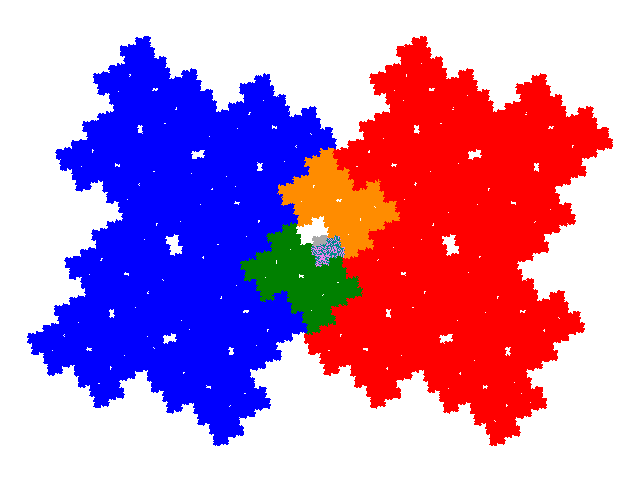
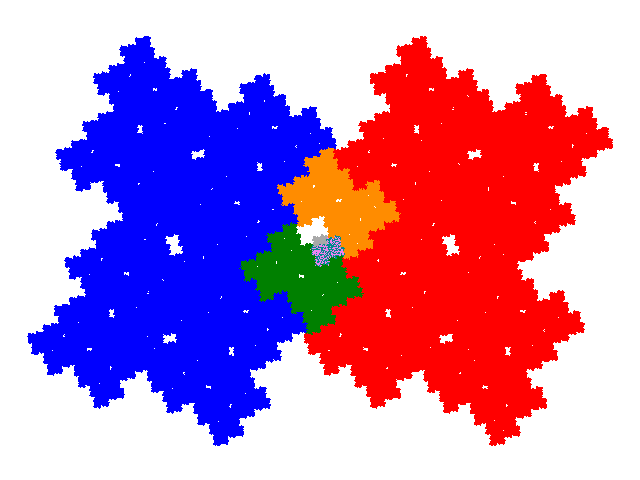
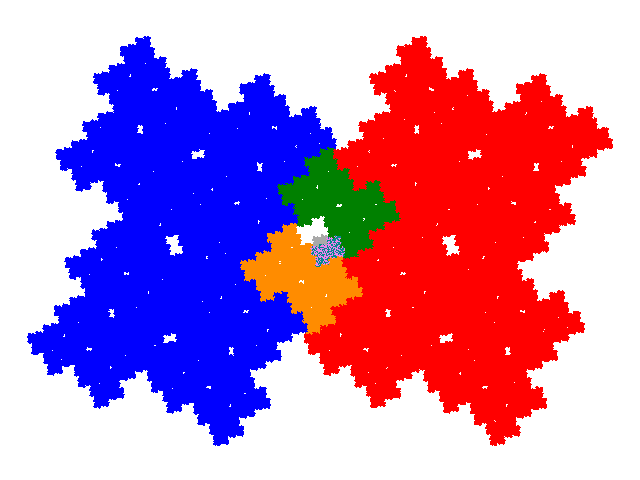
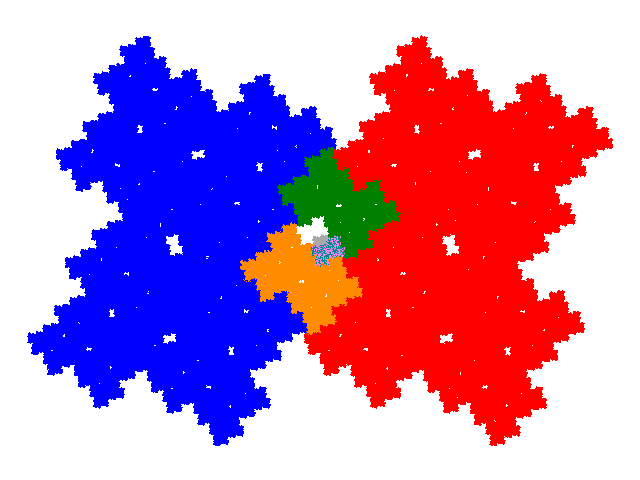
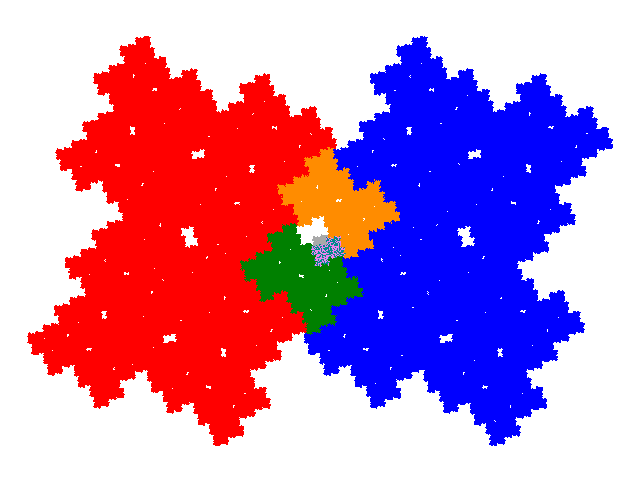
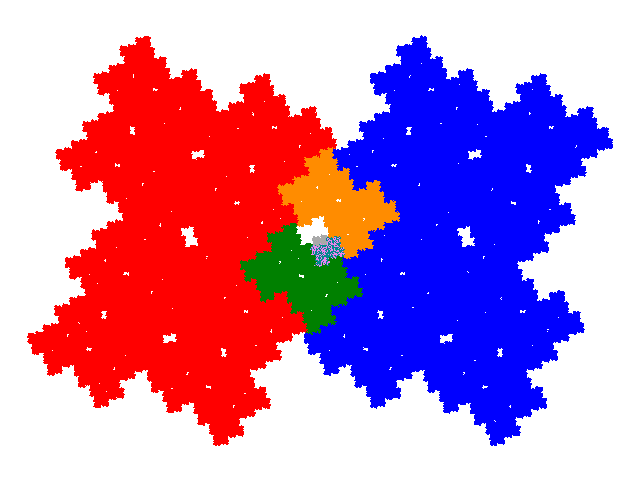
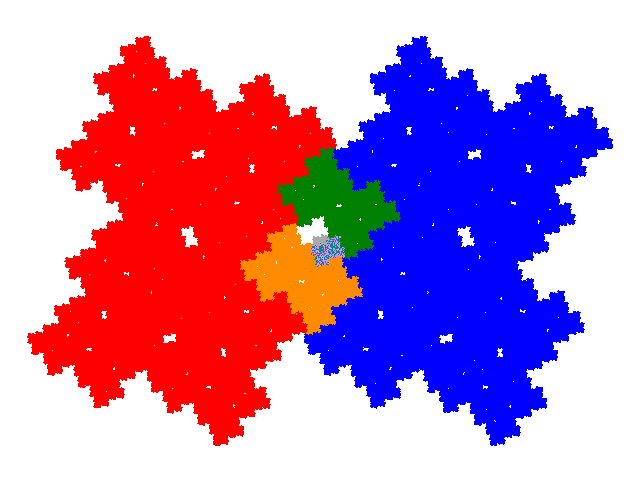
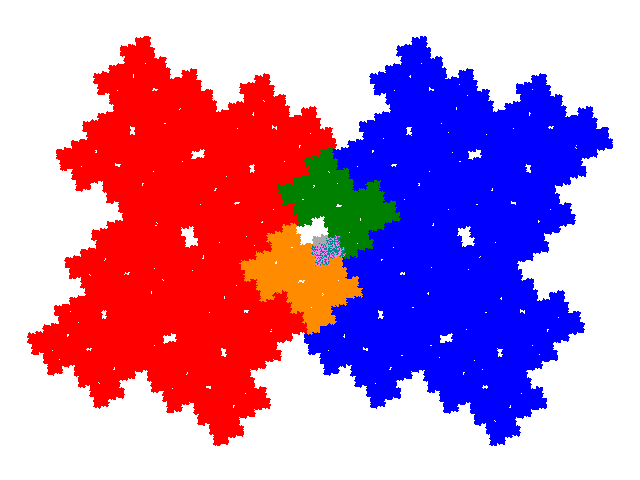
There are 8 tiles in which the c7 elements are colocated, while the other elements are either in their original positions or swapped. These have IFSs as follows (elements of the same size have the same sign)
T0: p →
±a9p
T1: p → +a7p - a6
T2: p → -a7p - a6
T3: p → ±a4p + a3
T4: p → ±a4p - a3
T5: p → ±a1p + 1
T6: p → ±a1p - 1








These tiles look very similar. They can be distinguished more readily if the weight function is plotted (as below). Here the purple areas shows those parts of the tile which cover the whole of the corresponding area of the plane, and the green areas those parts of the tile that cover 50% of the corresponding area of the plane, and the relative position of the filled and void regions is more readily seen. However the difference corresponding to the orientation of the smallest element remains scarcely or not visible.
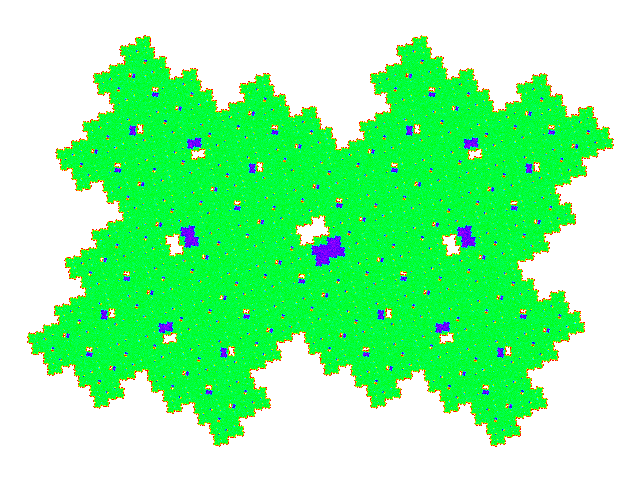
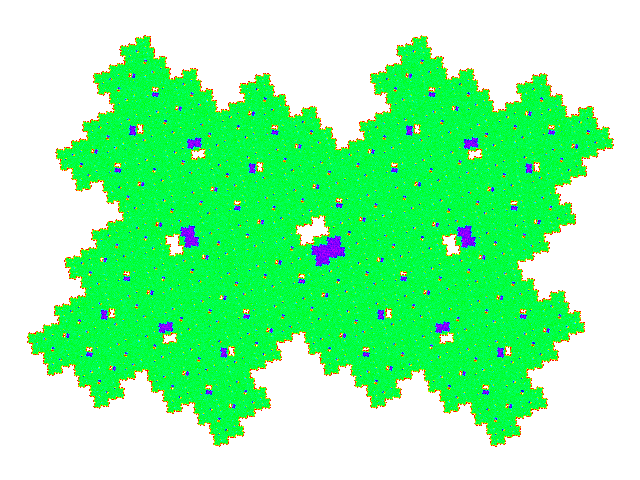
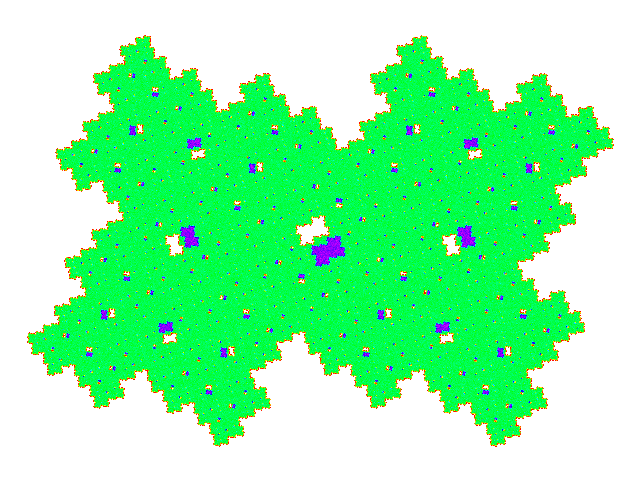
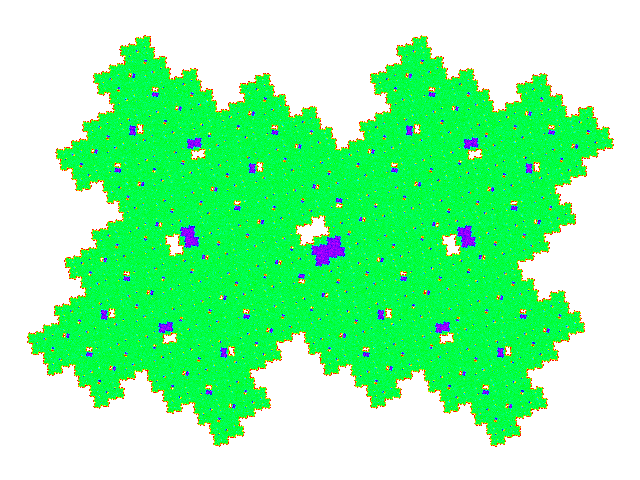
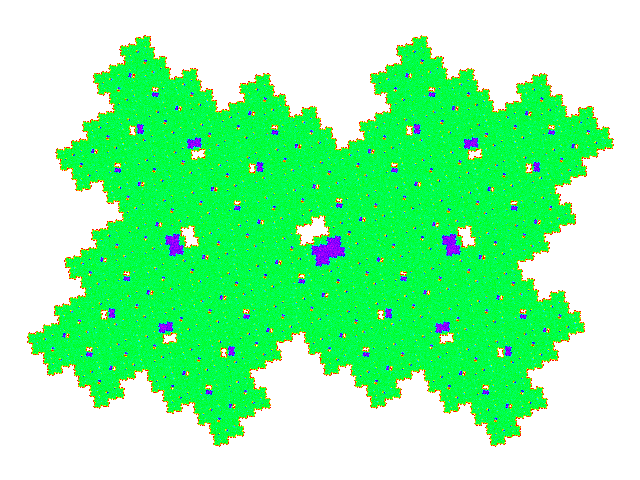
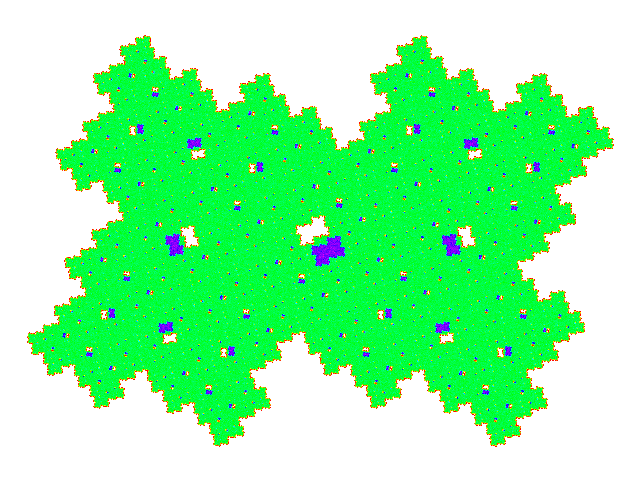
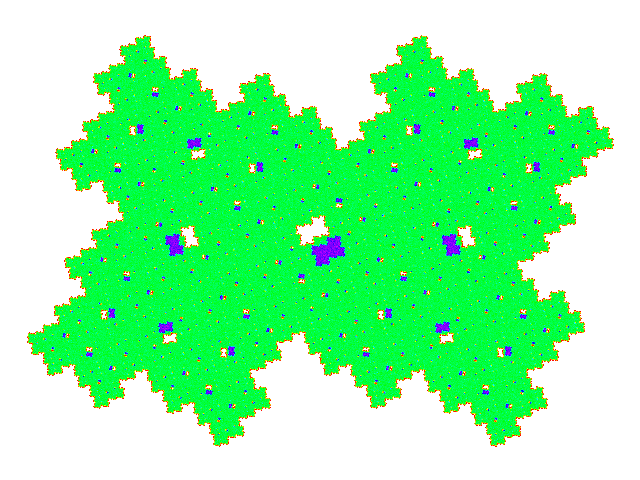
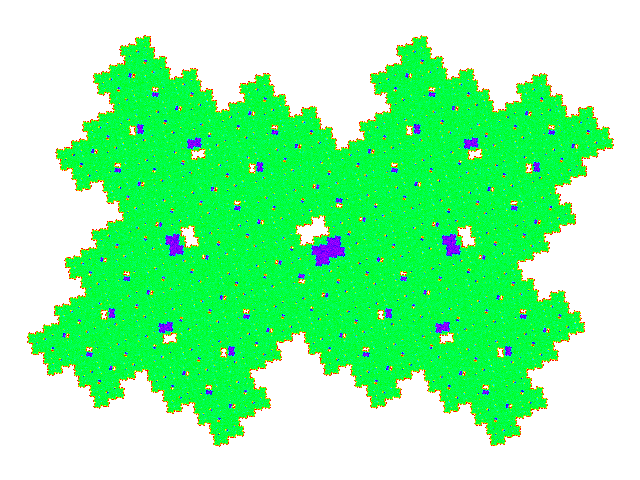
Two copies can (obviously) be put together to tile a symmetric tile. The images below show one copy in red, and a copy rotated 180° in blue; the magenta areas are where the two copies are entangled at below pixel scale.
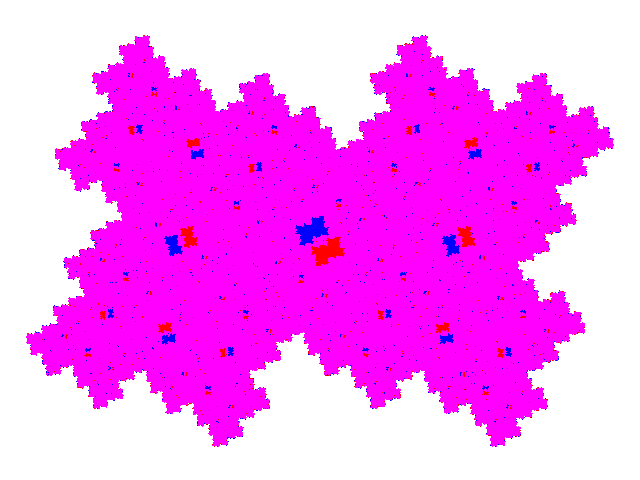
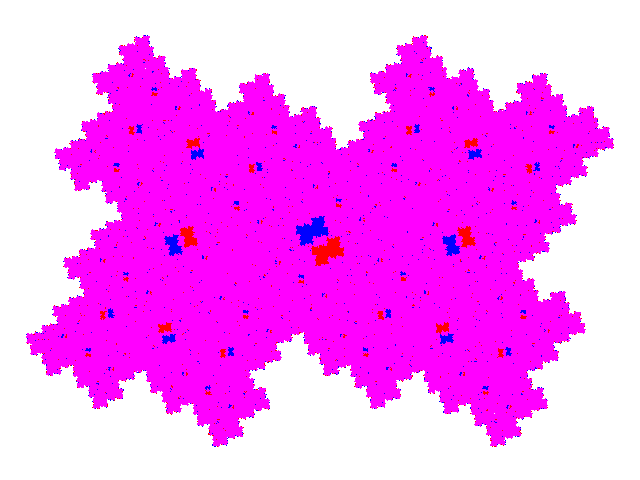
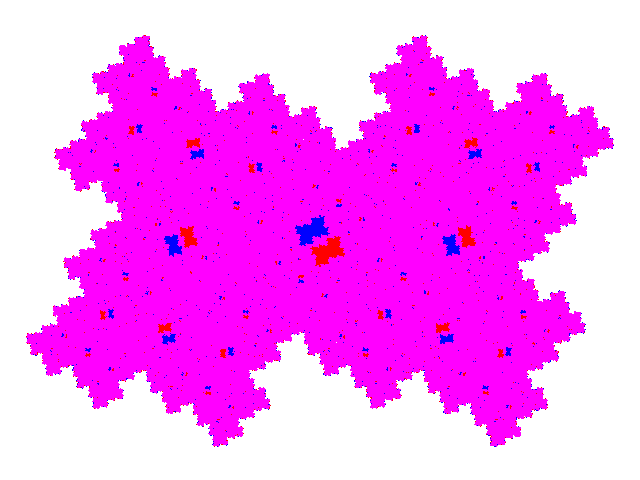
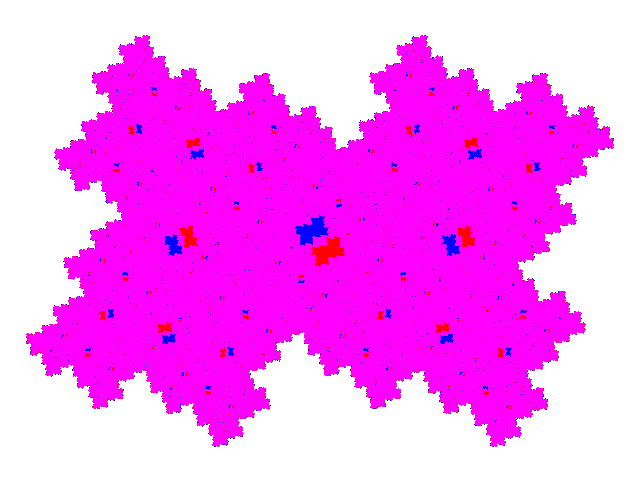
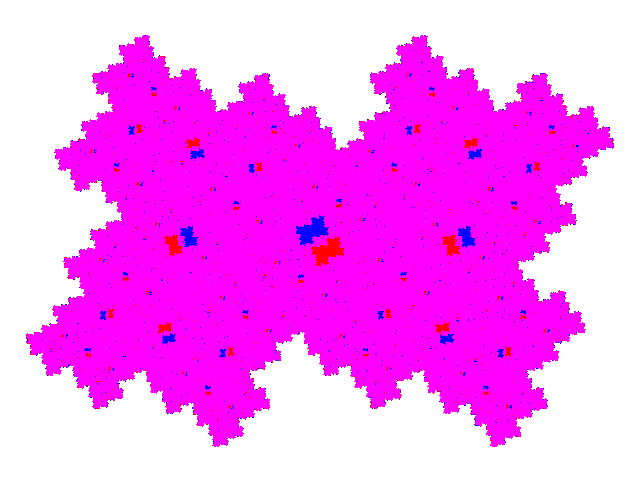
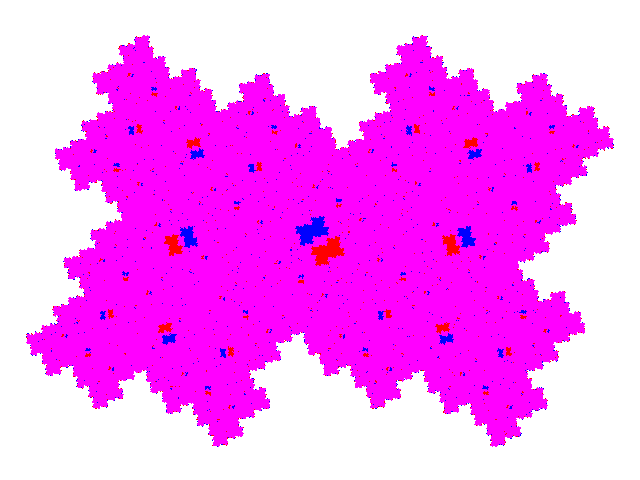
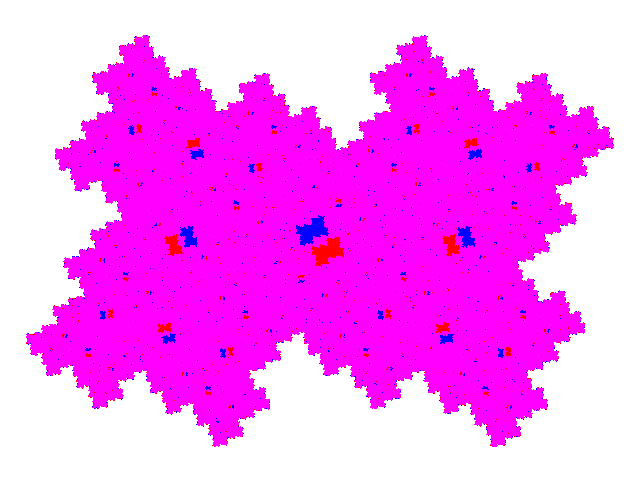
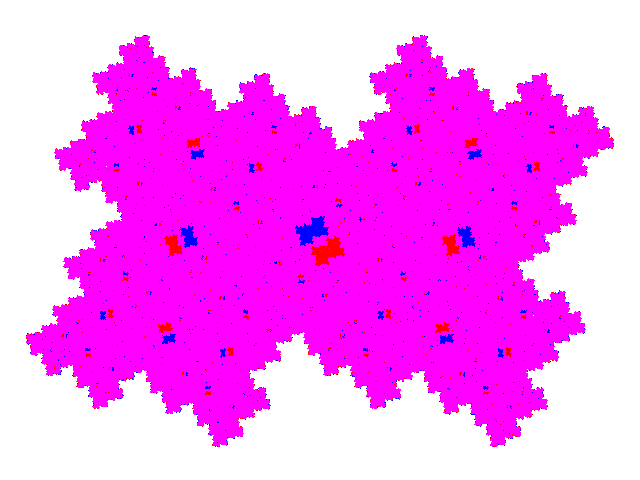
© 2015 Stewart R. Hinsley